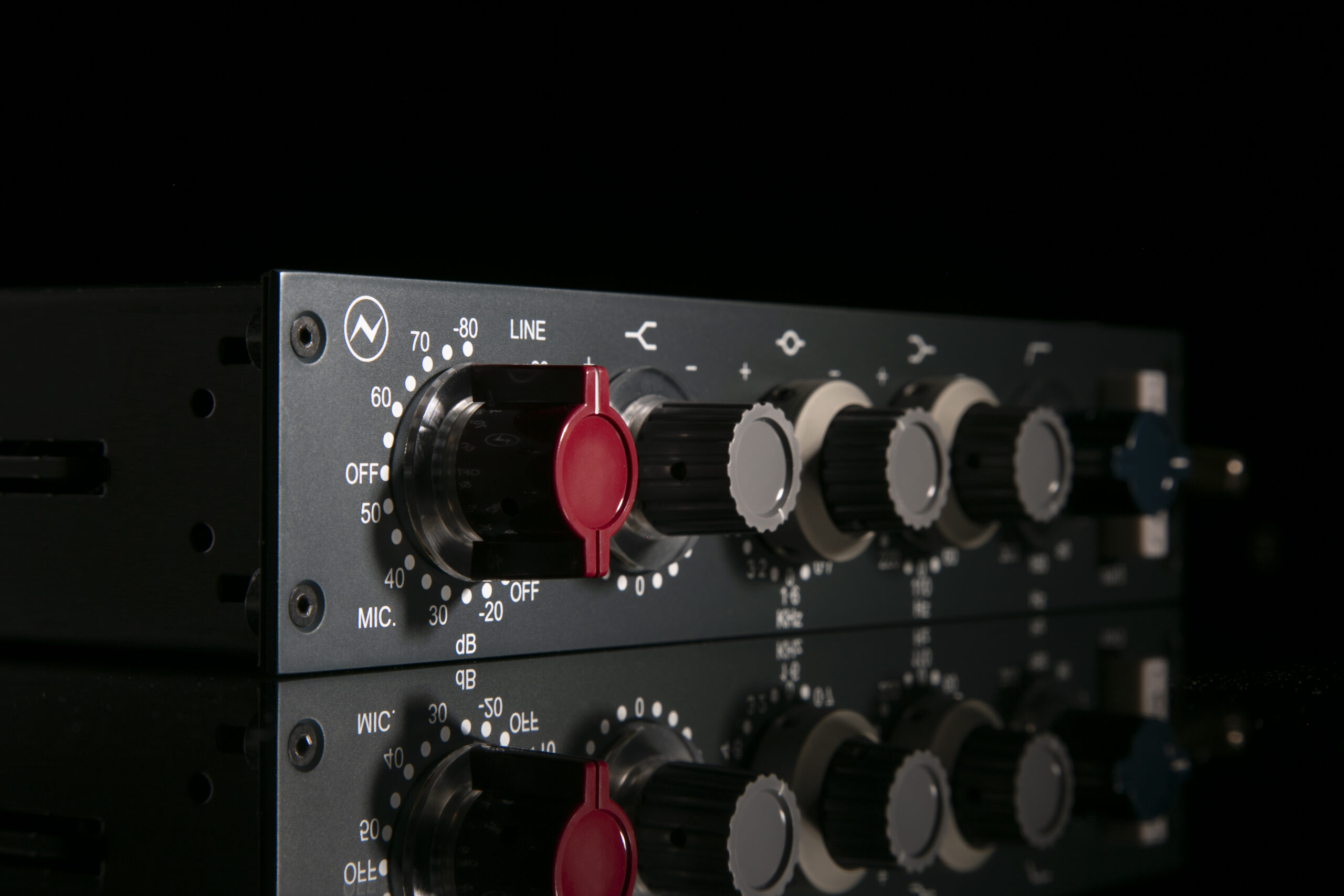

Each band offers ☑5dB of gain via continuously variable pots and the EQ bands as well as the filter can be individually bypassed to keep the signal clean when particular bands aren’t required. Amongst all these switches is a high pass filter rolling off 15dB/octave below 40Hz, 80Hz, 160Hz or 320Hz and three bands of inductor-based EQ that utilise the classic Neve EQ steps as well as adding more options in the mid and high frequency bands. These switches select power on/off, input/output metering and metering dB range (normal and -20dB for gauging lower levels accurately). Over on the right hand side, the last three switches accompany a rather nifty circular VU meter.

On the left are three that select line/microphone source, Hi-Z DI input and 300/1200Ω mic impedance (handy for optimising lower output ribbons, etc), while on the other side of the stepped input gain control another three switches select EQ in/bypass, phase and phantom power settings. Apart from the input and output gain and EQ controls, there are nine toggle switches on the unit. Overall, the 7603 offers a lot of features for a 1RU device. Finally, Chameleon Labs utilises a new set of custom designed and manufactured inductors in the EQ circuits, further enhancing what was a popular feature of the earlier 7602 model. All of the 7603’s operational amplifiers used in the unit are based on this new topology. The second main point of difference from previous designs is the new discrete audio input gain stage. These ‘in-house’ manufactured transformers deliver high bandwidth and low distortion specs and are very musical in their implementation. Most notably there are new proprietary microphone and line-level input transformers that feature custom-made nickel laminations and bobbin assemblies. While the 7602 was also based on the 1073 design and layout, Chameleon Labs has raised the circuit design bar with several major design changes implemented in the 7603. Like its predecessor, the silver 7602, the 7603 is very much a tribute to ‘revered classic preamps of the past’, which is to say the solid-state, discrete Neve 1073 preamp specifically. I managed to just sneak the Chameleon Labs units into my rack with a bit of finagling. Speaking of racks, the width of the 76 Xmod chassis behind the rack ears is at the absolute maximum so if you’ve got home-made racks (as I do) you need to make sure they are wide enough to accommodate these units.
#Neve 1073 preamp ableton pro
The look and feel of these units is definitely pro and they sat in my racks looking very comfortable alongside units worth twice and three times their price. Laser etched legending and small silver toggle switches round out the faceplate layout. Dispensing with the silver faceplates and controls of the earlier product line, these units scale up the style with a matte black, anodised steel chassis, black aluminium faceplates, and tasteful blue, gold and silver milled aluminium knobs that are super smooth to the touch with centre-detents for easy resetting. Unpacking the two preamp boxes, it was immediately clear these are serious rack units with a fair heft to each of them and a high quality build. I was keen to take them for a drive in the studio and play them up against my vintage Neve 1272-based preamps to see how the new Chameleon Labs’ sounds stacked up.

These are the first in a new generation of products that promise to see Chameleon Labs up the ante in its area of the market. With renowned engineer Marcelo Vercelli (Mackie, Event Opal, RCF) taking over the company in 2014, Chameleon Labs has undertaken several years of research and development resulting in the release of the 76 Xmod preamps. Its products are neither bargain basement nor pricey, and have always offered users great feature sets and a taste of what lies further up the audio food chain. What am I missing? I know there are a lot of people out there who have these.Since the early 2000s Chameleon Labs has carved out quite a niche for itself in the middle ground of the audio market. In the notes, "clone eq" means an eq that closely resembles the 1073. Now, I guess any transformer-based preamp is "inspired" by the 1073, but I just started a list of current production models available in the US that have some direct connection to the 1073. Started thinking about the various Neve 1073 inspired preamps out there and decided to start a list to compare.


 0 kommentar(er)
0 kommentar(er)
